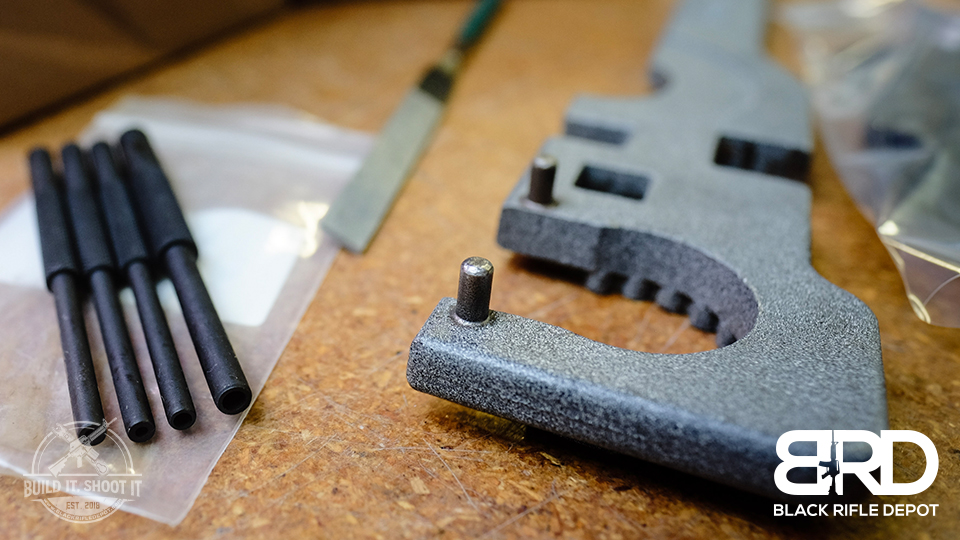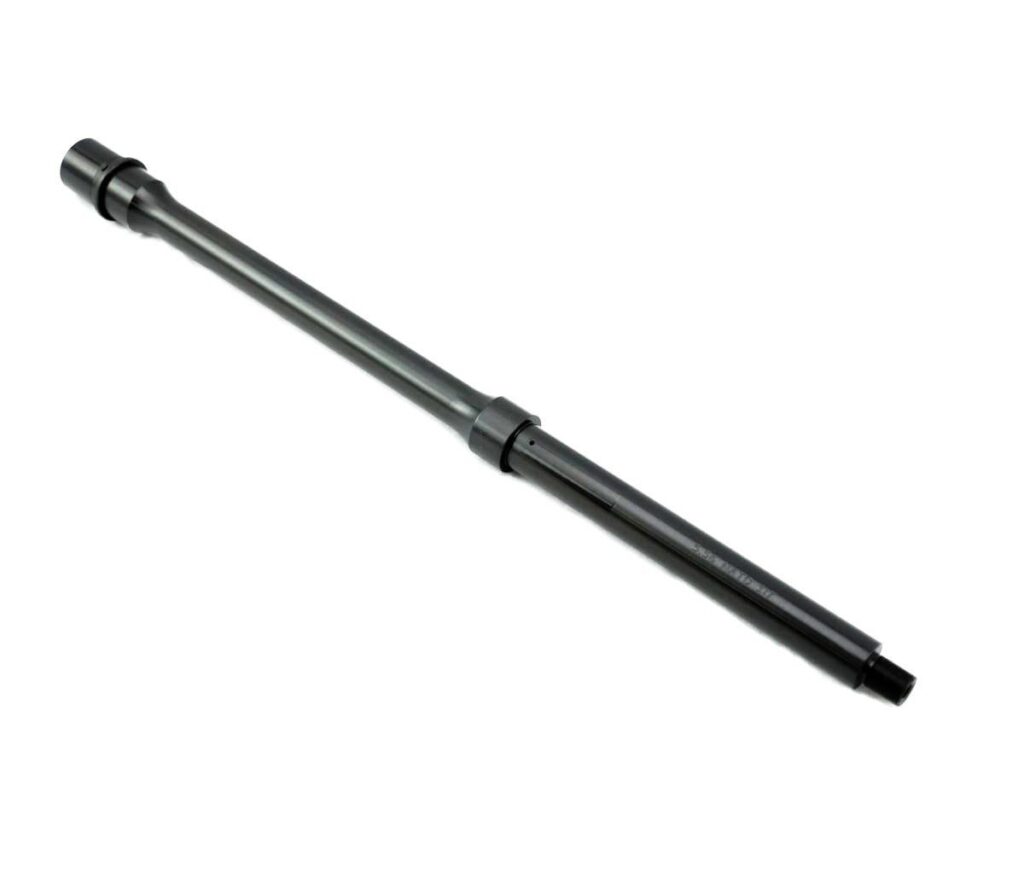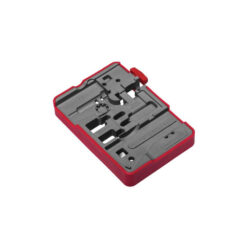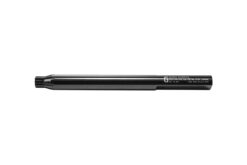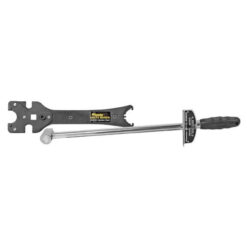Armorer Tools
Essential Tools for AR-15 Barrel Installation: Barrel Nut Wrenches and More
Table of Contents
Why Your AR-15 Barrel Matters
The AR-15 barrel is one of the most critical components in determining accuracy, reliability, and overall shooting performance. Whether you’re building from scratch, upgrading an existing rifle, or swapping calibers, selecting the right barrel and installing it correctly can make a huge difference. With AR-15 barrels in countless profiles, lengths, and finishes—from 16-inch government profiles to precision 20-inch AR-15 barrels—there’s something for every shooting style.
Beyond choosing between options like carbon fiber AR-15 barrels or bull barrels, proper installation is essential. Incorrectly torqued barrel nuts or misaligned gas systems can lead to malfunctions, poor accuracy, or even damage to your rifle. This guide covers the necessary tools for barrel installation, step-by-step instructions, common mistakes to avoid, and tips to keep your investment in top condition. Whether you’re buying the best AR-15 barrels for a custom build or simply replacing a worn one, the proper knowledge and gear will make the process smooth and reliable.
Why Proper Tools Are Essential for AR-15 Barrel Installation
When it comes to installing an AR-15 barrel, cutting corners on tools can lead to poor results. The correct tools ensure your barrel is seated properly, the gas system aligns correctly, and your AR-15 barrel nut is torqued to spec. Using the wrong tools—or worse, improvising—can strip threads, damage your upper receiver, or prevent your barrel from achieving its full accuracy potential.
For example, when threading an AR-15 barrel, precision is key. Without a proper barrel nut wrench or torque wrench, you risk under-tightening or over-tightening, which can lead to functional and safety issues. Even something as simple as a carbon fiber barrel for an AR-15 requires careful handling to prevent scratches or heat-related damage. Proper tools not only protect your investment but also make the process faster and more consistent.
Well-made tools from reputable brands like Aero Precision or Geissele Automatics are engineered for repeatable performance. Investing in these ensures your rifle is built to last while minimizing frustration during assembly.
Key Tools Needed for AR-15 Barrel Installation
Barrel Nut Wrenches
A dedicated AR-15 barrel nut wrench is crucial for tightening and loosening the barrel nut without damaging the upper receiver. These wrenches fit the nut precisely, preventing slippage and ensuring even torque application. For specialty builds, like an AR-15 bull barrel or free-float handguard installation, you may need a wrench compatible with your specific barrel nut design.
Torque Wrenches
Correct torque is critical. Over-tightening can warp the receiver, while under-tightening risks loosening during use. A torque wrench calibrated for firearm assembly ensures you meet the proper torque for AR-15 barrel nuts—often between 30–80 ft-lbs, depending on the manufacturer’s specs.
AR-15 Upper Receiver Vice Block
This tool locks your upper receiver securely in a vise, preventing stress on the receiver while you work. It’s a must-have for maintaining alignment and avoiding cosmetic or structural damage.
Gas Block Roll Pin Punch Set
A quality punch set makes installing and removing gas block roll pins easier and cleaner. This is especially important when changing AR-15 barrel length or profiles that require different gas system setups.
Allen Wrenches
Many modern gas blocks and handguards use Allen screws. Having a durable set ensures you can adjust or secure components without stripping screws.
Handguard Removal/Installation Tools
Specialized tools help remove and install handguards without scratching or bending parts. This is important when adding a barrel guard, carbon fiber handguard, or other accessories.
Anti-Seize Lubricant
Applying anti-seize to the threads prevents galling and makes future disassembly easier. It’s a small step that can save you significant headaches later.
Step-by-Step Guide to AR-15 Barrel Installation
- Secure the Upper Receiver – Place your AR-15 upper receiver into a vice block and lock it into a bench vise.
- Prepare the Barrel – Clean threads, apply anti-seize to the barrel extension and receiver threads.
- Insert the Barrel – Slide the barrel extension into the upper receiver, ensuring proper alignment.
- Install the Barrel Nut – Thread the barrel nut by hand, then tighten with the barrel nut wrench and torque wrench to the manufacturer’s torque spec.
- Align for Gas Tube – Loosen and retighten in increments until the gas tube channel lines up perfectly.
- Attach Gas Block and Tube – Install the gas block using a roll pin punch set, ensuring the gas port aligns.
- Reinstall Handguard – Attach your chosen handguard, barrel guard, or cover, making sure it’s secure and aligned.
- Final Inspection – Verify torque, alignment, and ensure no tools have damaged your AR-15 barrel surface.
Tips for Successful Barrel Installation
- Check Barrel Nut Torque Twice – Temperature changes and material settling can slightly affect torque, so recheck after initial tightening.
- Use Quality Tools – Cheap wrenches and punches can cause more harm than good.
- Mind Your Finish – Use protective padding around the receiver and barrel to avoid scratches, especially with carbon fiber barrels.
- Dry Fit First – Before final tightening, assemble components loosely to ensure proper fit and function.
- Follow Manufacturer Specs – Each AR-15 barrel profile, whether lightweight, government, or bull barrel, can have unique requirements.
Common Mistakes to Avoid
- Over-Torquing the Barrel Nut – Can deform the receiver or affect accuracy.
- Skipping Anti-Seize – Leads to seized threads and difficult disassembly.
- Improper Gas Block Alignment – Causes cycling issues or short-stroking.
- Using the Wrong Wrench Size – Damages barrel nuts and slips easily.
- Mixing Incompatible Parts – Ensure your barrel extension, receiver, and gas system length match.
Recommended Tools and Brands
Quality tools and barrels make all the difference. Brands like Aero Precision, Faxon Firearms, and Ballistic Advantage are trusted for precision manufacturing and durability. For tools, Wheeler Engineering and Geissele Automatics are top picks for professional-grade wrenches, vice blocks, and torque devices.
Maintenance and Tool Care
Your tools are an investment—keep them clean, dry, and lubricated where appropriate—store torque wrenches in their lowest setting to preserve calibration. Inspect your AR-15 barrels regularly for fouling, corrosion, or damage, especially after high-volume shooting or harsh weather exposure.
FAQs About AR-15 Barrels and Installation
When upgrading or building your AR-15, the barrel is one of the most critical components to get right. From selecting the proper barrel length to ensuring correct installation, there’s a lot to consider. The right tools, techniques, and materials can make the difference between a rifle that performs flawlessly and one that struggles with accuracy or reliability. Below are some of the most common questions shooters have about AR-15 barrels, along with straightforward answers to guide you through the process.
What is the best AR-15 barrel length for accuracy?
For maximum velocity and long-range precision, a 20-inch AR-15 barrel is often preferred, especially for target shooting or varmint hunting. A 16-inch barrel, however, offers an excellent compromise between maneuverability, weight, and effective range, making it a great choice for general-purpose builds.
Can I install an AR-15 barrel without a torque wrench?
It’s strongly discouraged. A torque wrench ensures your barrel nut is tightened to the manufacturer’s recommended specification, which is critical for maintaining structural integrity and accuracy. Without it, you risk over-tightening, which can warp the receiver, or under-tightening, which can lead to the barrel coming loose during use.
Do carbon fiber AR-15 barrels improve performance?
Yes. Carbon fiber barrels reduce overall rifle weight, help dissipate heat faster than traditional steel barrels, and often maintain accuracy better during prolonged firing sessions. They’re especially appealing for competitive shooters or hunters who prioritize both performance and portability.
How often should I replace my AR-15 barrel?
Barrel lifespan depends on caliber, firing schedule, and maintenance habits. On average, most AR-15 barrels last between 10,000 and 20,000 rounds before accuracy begins to degrade noticeably. High-volume or rapid-fire shooting can shorten this lifespan significantly.
What torque spec should I use for an AR-15 barrel nut?
Most AR-15 barrel nuts require 30–80 ft-lbs of torque. Always check your barrel and receiver manufacturer’s instructions, as specific builds—such as those with free-float handguards—may have their torque requirements.
Do I need special tools for AR-15 bull barrels?
Bull barrels are heavier and often have larger diameters, which may require handguards with larger internal clearance and wrenches designed to fit around the profile. Planning ensures you have the proper parts and tools to complete the job without damaging components.
Can I swap barrels on my AR-15 easily?
Yes, with the correct tools, knowledge, and preparation, barrel swaps can be straightforward. However, always recheck headspace, gas system alignment, and torque specifications to ensure the rifle remains safe and reliable.
What is the benefit of a barrel guard or cover?
A barrel guard or cover protects your hands from heat buildup during shooting, while also preventing scratches, dings, and environmental wear to the barrel surface. They can also improve grip and handling when shooting from various positions.
Conclusion: Build It Right the First Time
Installing an AR-15 barrel isn’t just about tightening a nut—it’s about precision, alignment, and long-term reliability. Whether you choose a lightweight carbon fiber barrel, a precision bull barrel, or a versatile 16-inch option, the right tools and techniques make all the difference in accuracy and performance. Taking the time to do it right ensures your rifle runs flawlessly and delivers consistent results shot after shot.
Shop premium AR-15 barrels and installation tools today at Black Rifle Depot and start your build with confidence, knowing you’re using the best parts for your custom AR-15.
For additional resources, visit AR15BuildersForum.

